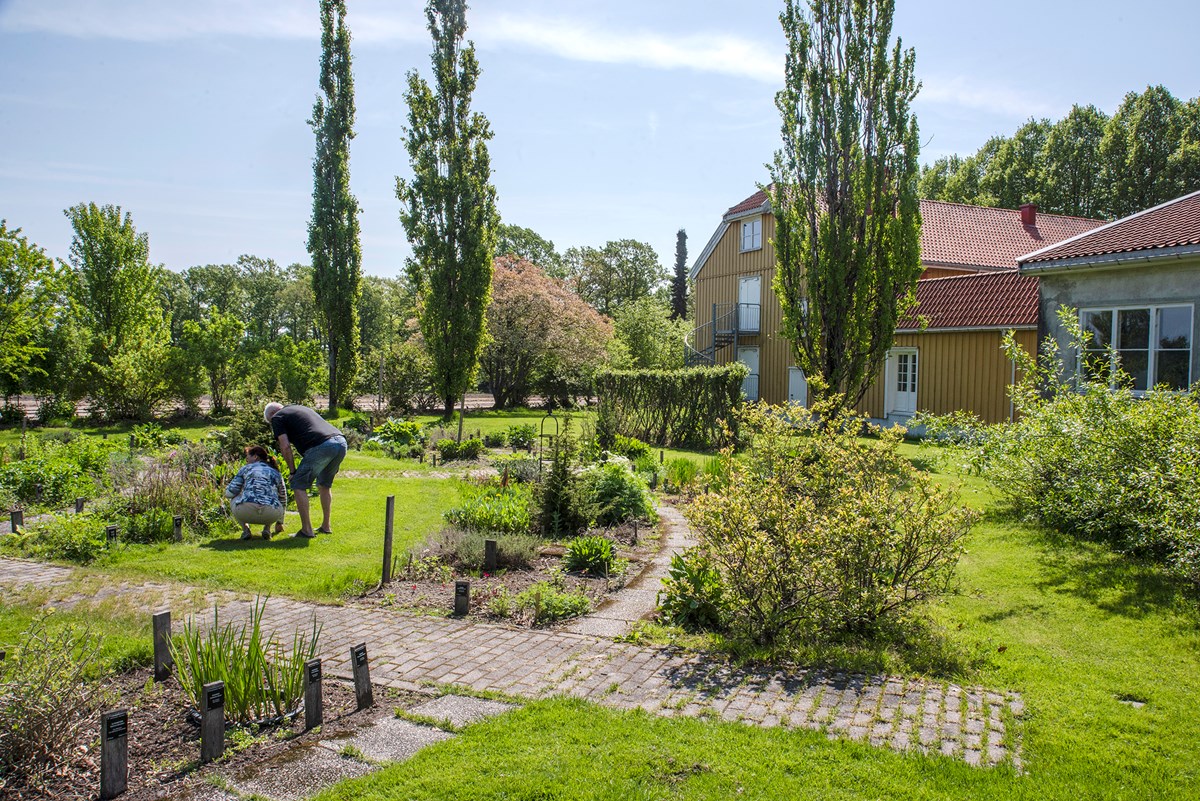Dømmesmoen

Dømmesmoen is located by Raet – a large terminal moraine from the last Ice Age. Traces of early settlements are many, particularly from the Iron Age. Among these are menhirs and stone formations that may have been used in religious rituals, and over 40 burial mounds of which several have been excavated.
Dømmesmoen farm was mentioned in writing as early as the 1600s, but its more recent history began in the 1920 when it became Statens gartnerskole Dømmesmoen – a state-run horticultural college. Gamlebygget, the then new school building – beautifully reflected in the pond – was completed in 1923, and shortly after the first cohort moved in and embarked on their education. An English Landscape style park was created, and the planting of perennials, shrubs and trees has continued over the years; also after the college closed down and Grimstad Municipality took over park ownership and management.
Two of its key attractions are the pond by “Gamlebygget” and the large, hollow "Dømmesmoen Oak". The oak is approx. 500 years old, and has a stem circumference of over 7 m. Most children in Grimstad have crawled through the narrow gap to experience the Dømmesmoen Oak from the inside. The park has large collections of trees, shrubs, roses, climbers, and perennials. Cluster roses, stem roses, climbing roses and repeat-flowering shrub roses are in bloom from July to the end of the season. The original shrub rose varieties are in flower from late June.
Almost all the perennial species listed by Hageselskapet, the Norwegian horticultural society, are represented in the demonstration area. These are in flower from early spring to the first frost arrives. Next to the perennials is Ibsen's herb garden – a collection plants used in medicine in the mid-1800s when Henrik Ibsen worked as an apothecary's apprentice in Grimstad. This is also where the Millennium Garden is located – a collection of old garden and food plants from the many Agder municipalities.
22 ecosystems have been discovered in the Dømmesmoen forest. An 85-acre arboretum is planned, and will be created on nature's own terms. Shrubs and trees will be planted to allow visitors to explore and learn about the various ecosystems. Many of the Dømmesmoen plants date back to the early days of the college, and are today fully developed. Over the years, an interesting collection has been built, comprising some 700 different shrubs and trees. Together with the "Dømmesmoen Oak" and the lime-tree avenue by the museum, the plant collection is a unique starting point for a future arboretum.
2 km east of Dømmesmoen is Fjære Church – a stone church from the 1100s. In the churchyard is a Terje Vigen memorial stone, and south of the church are the rectory, a war memorial, and Olavskilden – the St. Olav spring.

